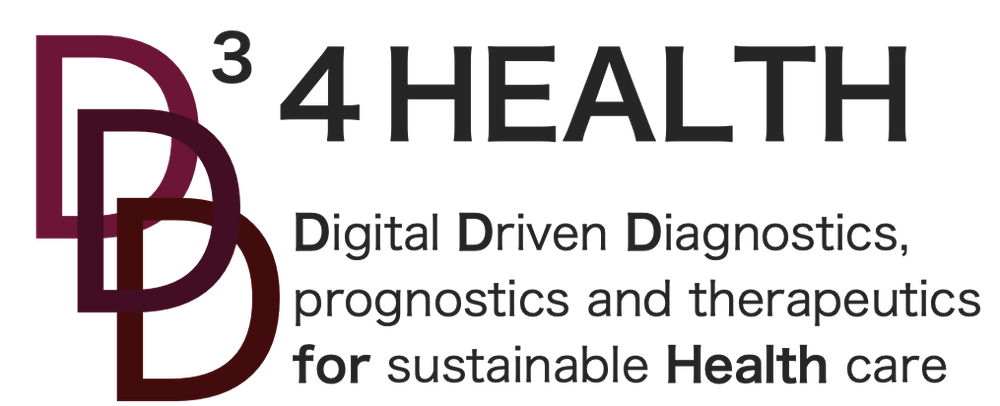The need
Type 1 diabetes is a complex chronic disease that requires rigorous daily management. Despite advances in therapies and monitoring devices (such as continuous glucose sensors), many patients struggle to maintain optimal glycemic control over the long term. This difficulty in management exposes them to a high risk of serious complications – such as cardiovascular, renal, neuropathies and retinopathies – which compromise quality of life and increase costs and burdens on the healthcare system. In addition, each diabetic patient has unique characteristics: genetic factors, lifestyle and responses to therapies can vary significantly from person to person.
As a result, personalizing the treatment pathway and predicting the progression of the disease for each individual have become top priorities. Physicians today have access to an increasing amount of data – from daily blood glucose measurements to historical clinical data and lifestyle information – but transforming this data into targeted clinical decisions is still an open challenge. This is why there is a need for advanced tools that support specialists and patients in deeply understanding the disease and planning tailored interventions.
The complexity of these needs requires innovative solutions. dAIbetes was born with the aim of addressing these challenges, improving the understanding of the disease and paving the way for a more personalized and proactive diabetes management.
The Project
dAIbetes – Data and Artificial Intelligence for the Development of Predictive Models for Diabetes Management aims to improve the understanding and management of diabetes through the integration of advanced modeling and interpretable artificial intelligence techniques. The primary goal is to identify subgroups of diabetic patients, evaluate their clinical outcomes, and analyze risk factors associated with complications. Through sophisticated data analysis techniques—such as clustering and time-series analysis—the project aims to uncover hidden patterns in clinical information, thus personalizing treatments and predicting disease progression for each patient. A crucial element is the development of advanced predictive models that integrate a wide range of data (clinical, genomic, and environmental): these models promise to provide more accurate predictions of diabetes progression and the onset of complications, enabling timely and tailored preventive interventions. Furthermore, dAIbetes envisions the development of a Digital Twin—a "digital twin" that reproduces in detail and dynamically the physiological, metabolic, and genetic characteristics of the diabetic patient. This tool allows for the advance simulation of the effects of different treatments and the identification of new parameters useful for further stratifying patients into homogeneous groups.
To concretely meet the key needs in modern diabetes management, the project is based on four highly integrated technological and methodological pillars:
- Data Integration and Quality
dAIbetes collects and harmonizes heterogeneous clinical sources (electronic records, wearable sensors, specialist reports) through data cleansing pipelines, semantic annotation and outlier control. The result is a coherent, complete and fully GDPR compliant information heritage. On this basis, advanced clustering algorithms are applied that identify homogeneous subgroups of patients and reveal hidden temporal patterns, an essential element for precision medicine.
- Multi-scale modeling
A combination of deep neural networks and agent-based models reproduces biological dynamics at both the microscopic (cellular and metabolic processes) and macroscopic (clinical trends over time) levels. The result is a Digital Twin of the diabetic patient, capable of simulating with high accuracy the progression of the disease and the response to different therapeutic regimens, providing clinicians with a virtual test bed for targeted therapeutic choices.
- Secure and scalable infrastructure
The cloud-native architecture is designed for maximum interoperability and protection of sensitive data. Continuous delivery mechanisms and automatic monitoring ensure stable performance, the ability to scale quickly and immediate rollbacks in the event of anomalies, thus ensuring reliability at every stage of the application lifecycle.
- Clinical validation and continuous optimization
The model is evaluated with diabetes specialists using rigorous accuracy, sensitivity, and precision metrics. Clinical feedback fuels iterative improvement cycles that continually refine predictions and keep the Digital Twin aligned with the best scientific evidence.
Thanks to this integrated architecture, dAIbetes transforms data into operational knowledge, supporting timely and personalized decisions to improve glycemic control and prevent complications.
The project is carried out in close synergy with a network of excellent partners, with Phoenix in the role of leader.
Project funded by the European Union – Next Generation EU – as part of the complementary fund to the National Recovery and Resilience Plan (PNC), program “Digital Driven Diagnostics, prognostics and therapeutics for sustainable Health care” (D3 4 Health) PNC0000001 and CUP B53C22006090001, Spoke 2, University of Salerno.





